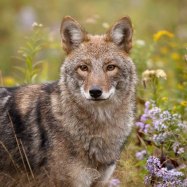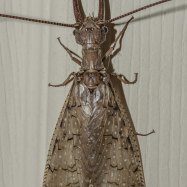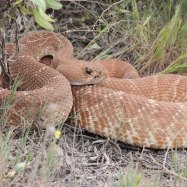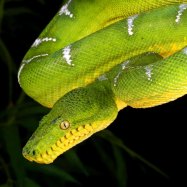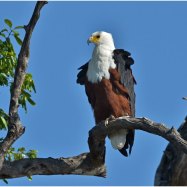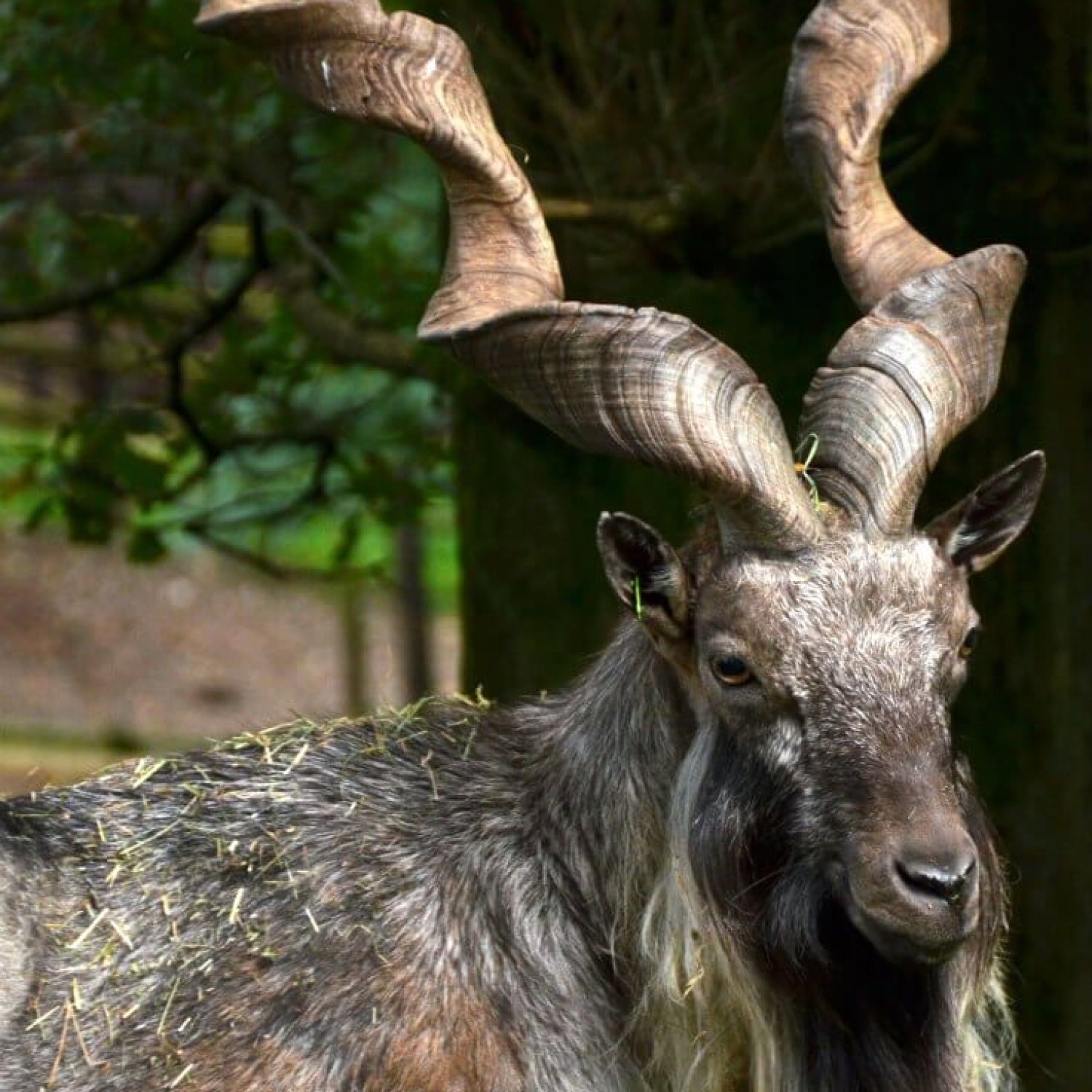
Markhor
140-165 cm
The majestic Markhor, found in the Himalayan ranges, is known for its impressive set of spiraled horns and stocky, muscular body. Belonging to the Bovidae family, these animals can grow up to 140-165 cm in length and are a sight to behold in their natural habitat. Learn more about these magnificent creatures and their unique adaptations in the wild. #Markhor #Himalayas #Bovidae #wildlife #nature
Animal Details Summary:
Common Name: Markhor
Kingdom: Animalia
Habitat: Mountainous regions
The Majestic Markhor of the Himalayan Ranges: A True Wonder of Nature
In the rugged and harsh terrain of the Himalayan ranges, lives a majestic creature that is a true wonder of nature - the Markhor. With its powerful and imposing appearance, it has captivated the hearts and minds of people for centuries.Known for its stunning physical features and unique behavior, the Markhor (scientific name: Capra falconeri) is a species of wild goat that inhabits the mountainous regions of Central Asia. Its name is derived from a Persian word meaning “snake eater,” as it was believed that the Markhor would prey on snakes Markhor. However, it is actually a herbivorous animal, feeding on a variety of plants and herbs.
As we delve deeper into the world of the Markhor, let us discover its incredible characteristics, natural habitat, and how we can preserve this remarkable creature for generations to come.
A Part of the Animal Kingdom
As with all living creatures, the Markhor belongs to the kingdom Animalia, which represents all animals. It falls under the phylum Chordata, which includes animals with a spinal cord. The Markhor also belongs to the class Mammalia - animals that have hair or fur, give birth to live young, and feed their young milk.Being a mammal, the Markhor is a warm-blooded creature, which allows it to survive in the harsh climate of the Himalayan mountains. It belongs to the order Artiodactyla, which includes animals with an even number of toes, and the family Bovidae, which includes hoofed mammals such as goats and sheep.
The Enchanting Habitat of the Markhor
The home of the Markhor lies in the mountainous regions of Central Asia, specifically in Pakistan. These graceful creatures can be found in the Himalayan ranges, as well as the Sulaiman and Hindu Kush mountains Mastiff. With their agile hooves and stocky body shape, they are able to navigate the steep and rocky terrains with ease.The Markhor prefers to live in high altitudes, ranging from 600 to 3,600 meters above sea level. They are most commonly found in areas with a lot of vegetation and rocky outcrops, as they provide shelter and food for these animals.
The Feeding Method of the Markhor
As mentioned earlier, the Markhor is a herbivorous animal, which means it feeds on plants and herbs. Its diet consists of a variety of vegetation, such as grass, leaves, and fruits. Due to the scarcity of food in the harsh and rugged terrain they inhabit, the Markhor has evolved to be able to survive on limited food and water.Their unique feeding style involves standing on their hind legs and using their long necks to reach tall plants and leaves. However, they mainly feed during the early morning and late afternoon, as they are most active during these times.
The Geographical Distribution and Country of Origin of the Markhor
The Markhor is native to Central Asia, specifically Afghanistan, Tajikistan, and Pakistan. It is also believed to have existed in neighboring regions such as India and Nepal. However, due to extensive hunting and habitat loss, their numbers have drastically decreased, and they can now only be found in small numbers in these countries.Out of all the countries that the Markhor has inhabited, Pakistan is its country of origin. In fact, it is the national animal of Pakistan and is proudly featured on its national emblem. The Markhor has been a part of the Pakistani culture and heritage for centuries, with its image found on coins as far back as the 4th century BC.
The Striking Appearance of the Markhor
One of the most striking features of the Markhor is its light brown to reddish-brown coat. Its coat has a thick undercoat to protect it from the cold, with long guard hairs that give it a unique mane-like appearance. The coloration of the Markhor’s coat also serves as camouflage, as it blends in perfectly with its rocky and tree-filled habitat.Furthermore, the Markhor has a stocky and muscular body, with a short and thick neck. The males are easily distinguishable due to their impressive corkscrew-shaped horns, which can reach lengths of up to 160 cm. These horns are used mainly for competition during the breeding season and are also a symbol of strength and dominance.
The Endangered Status of the Markhor and What is Being Done to Protect it
Despite its immense cultural and natural value, the Markhor is considered an endangered species. Its numbers have drastically decreased due to poaching for its horns, as well as habitat loss caused by human activities such as deforestation and infrastructure development.Fortunately, there have been efforts made to protect and conserve the Markhor. The government of Pakistan, in collaboration with international organizations, has implemented conservation programs and laws to protect this magnificent creature. This includes setting up protected areas and promoting ecotourism, which serves as a sustainable source of income for the local communities, while creating awareness and appreciation for the Markhor.
Moreover, the Markhor has also been listed on the International Union for Conservation of Nature (IUCN) Red List as a "near threatened" species. This highlights the need for continued efforts to preserve and protect the population of this species.
In Conclusion
In conclusion, the Markhor is not just a wild goat, but a true wonder of nature. Its powerful and imposing appearance, unique characteristics, and cultural significance make it a symbol of strength, resilience, and beauty. However, with its endangered status, it is our responsibility to safeguard this magnificent creature for future generations to witness and appreciate.The Markhor has survived in the harsh terrain of the Himalayan ranges for centuries, adapting and evolving to its environment. It is now up to us to ensure its survival against the various threats it faces. By creating awareness, supporting conservation efforts, and promoting sustainable practices, we can ensure that the Markhor continues to roam free in its natural habitat, enchanting those who are lucky enough to witness its beauty.

Markhor
Animal Details Markhor - Scientific Name: Capra falconeri
- Category: Animals M
- Scientific Name: Capra falconeri
- Common Name: Markhor
- Kingdom: Animalia
- Phylum: Chordata
- Class: Mammalia
- Order: Artiodactyla
- Family: Bovidae
- Habitat: Mountainous regions
- Feeding Method: Herbivorous
- Geographical Distribution: Central Asia
- Country of Origin: Pakistan
- Location: Himalayan ranges
- Animal Coloration: Light brown to reddish-brown
- Body Shape: Stocky and muscular
- Length: 140-165 cm
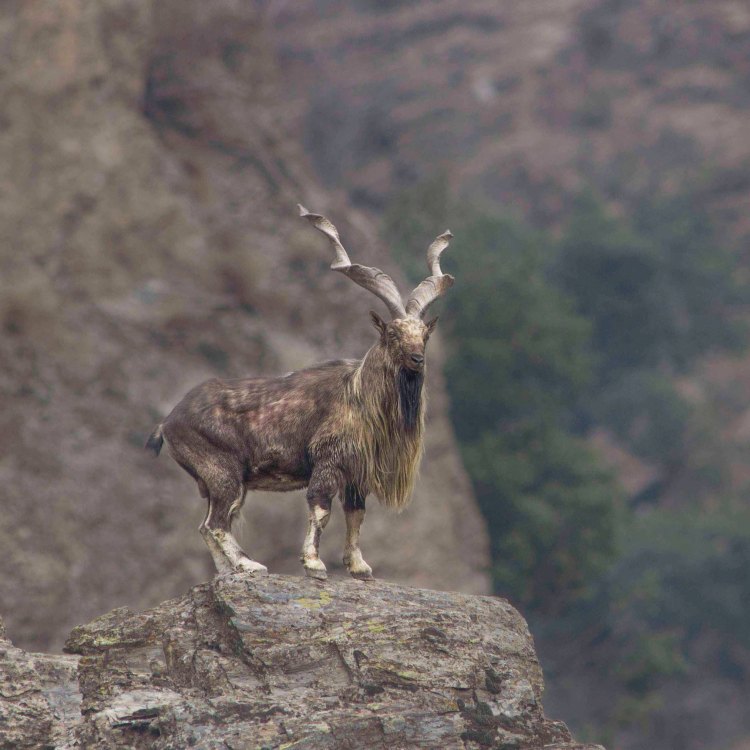
Markhor
- Adult Size: 90-115 cm (shoulder height)
- Average Lifespan: 10 to 13 years
- Reproduction: Sexual
- Reproductive Behavior: Polygynous
- Sound or Call: Low-frequency vocalizations
- Migration Pattern: Migratory within their habitat
- Social Groups: Small groups
- Behavior: Generally calm and non-aggressive, but can be territorial
- Threats: Habitat loss and hunting
- Conservation Status: Near Threatened
- Impact on Ecosystem: Important for maintaining ecological balance
- Human Use: Hunting and trophy hunting
- Distinctive Features: Spiral horns and long hair on throat and chest
- Interesting Facts: National animal of Pakistan
- Predator: Predation by wolves and snow leopards
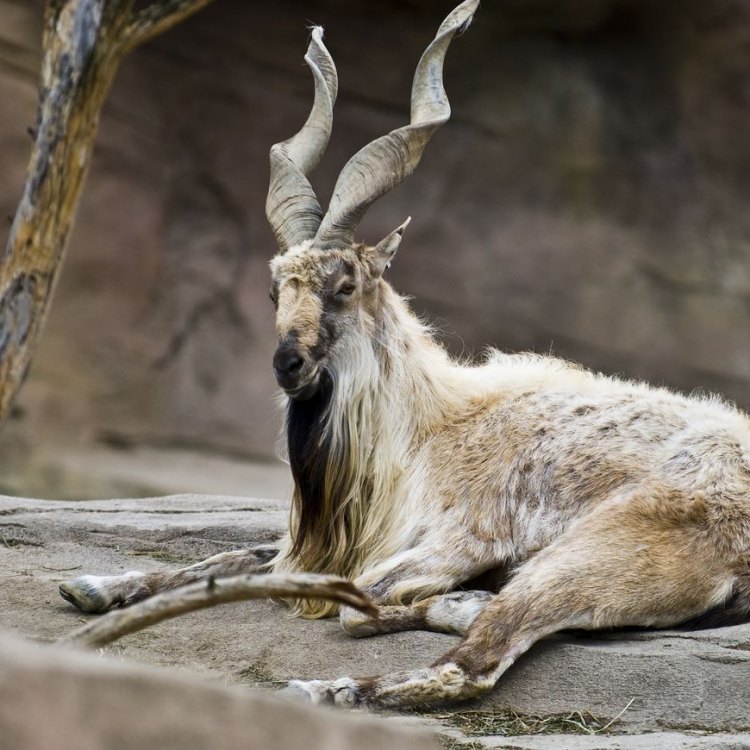
Capra falconeri
The Majestic Markhor: Pakistan's National Animal
In the rugged and mountainous regions of Pakistan resides a creature that can only be described as majestic – the Markhor. With its distinctive spiral horns and long hair on its throat and chest, the Markhor is not only a stunning sight to behold, but also holds great importance in the ecosystem and culture of Pakistan. In this article, we will explore the unique features and behaviors of the Markhor and the threats it faces, shedding light on why its conservation is crucial.The Markhor (scientific name: Capra falconeri) is a wild goat species found in the mountainous regions of Central Asia, specifically Pakistan, Afghanistan, Tajikistan, and India PeaceOfAnimals.Com. It is the national animal of Pakistan and has been featured on the country's currency and postage stamps. The name Markhor is derived from the Persian words 'mar' meaning snake and 'khor' meaning eater, due to its ability to kill and consume venomous snakes. The Markhor is also known as the screw horn goat, due to its distinctive spiral horns that can grow up to 160 cm in length.
One of the most striking features of the Markhor is its size, with adults reaching an average shoulder height of 90-115 cm. They can weigh between 32-110 kg, with males being significantly larger than females. These large and powerful animals have a lifespan of 10 to 13 years in the wild, and like most wild animals, their main means of reproduction is through sexual reproduction.
In terms of reproductive behavior, the Markhor is a polygynous species, meaning that one male mates with multiple females. During the mating season, which typically occurs from November to December, male Markhors will engage in fierce battles to establish dominance and win over females. These battles involve headbutting and locking horns, and can often lead to serious injuries or even death Mayfly. Once the dominant male is established, he will mate with several females in his harem.
The Markhor is a master of low-frequency vocalization, using a deep, throaty call to communicate with other members of their species. They also communicate through scent marking, where they rub their horns and body against trees or rocks, leaving behind their distinctive scent.
While Markhors are non-migratory within their habitat, they do exhibit some migratory behavior. During the harsh winter months, they will migrate to lower elevations in search of food and shelter. However, they tend to stay within their designated territories, which are marked by scent.
In terms of social behavior, Markhors are known to travel in small groups, typically consisting of 4 to 12 individuals. These groups are led by a dominant male, and often include females and their young. These herds can also merge to form larger groups of up to 50 individuals during the winter months.
Despite their massive size and striking appearance, Markhors are generally calm and non-aggressive animals. However, they can become territorial during mating season, and will fiercely defend their harem from competing males. If threatened or cornered, they may also exhibit aggressive behavior.
While the Markhor is not considered an endangered species, it is classified as Near Threatened on the IUCN Red List. The main threats to its survival come from habitat loss and illegal hunting. Due to its large size, the Markhor requires a vast territory to roam and graze, but due to human activities such as deforestation and development, its habitat is shrinking. Additionally, the Markhor is a prized trophy animal for hunters, with their distinctive horns and beautiful fur, making them a lucrative target for illegal poaching. This has led to a decline in their population in some areas.
The Markhor plays a vital role in maintaining the ecological balance of its habitat. As herbivores, they help control the growth of vegetation, which is crucial for maintaining a healthy ecosystem. They also provide an important source of food for predators such as wolves and snow leopards.
Unfortunately, the Markhor's value as a trophy animal has led to the creation of a controversial practice known as trophy hunting. This involves the hunting of big game animals for sport, with a portion of the fees paid by hunters going towards conservation efforts. While proponents argue that this can benefit conservation efforts and local communities, many conservationists argue that trophy hunting has no real conservation value and is detrimental to the already vulnerable Markhor population.
However, there are efforts being made towards the conservation of this magnificent species. The government of Pakistan has declared several areas as wildlife sanctuaries and national parks, where hunting and other human activities are strictly monitored and regulated. These efforts have shown positive results, with an increase in the Markhor population in these protected areas.
In summary, the Markhor is a magnificent animal, not only with its unique physical features but also with its significant role in the ecosystem and culture of Pakistan. Its conservation is crucial to maintain a healthy balance in its habitat and preserve a vital part of Pakistan's natural heritage. While the Markhor faces threats, there is still hope for its survival, and by raising awareness and implementing effective conservation measures, we can ensure that future generations can also witness the majesty of this incredible creature.
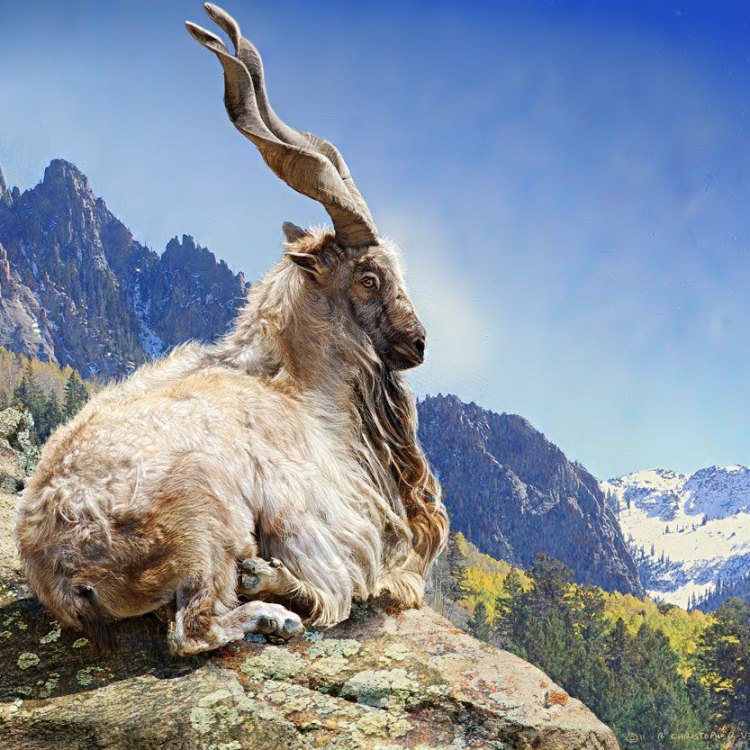
The Majestic Markhor of the Himalayan Ranges: A True Wonder of Nature
Disclaimer: The content provided is for informational purposes only. We cannot guarantee the accuracy of the information on this page 100%. All information provided here may change without prior notice.




